Phone: (585) 902 2822
Email: info@jimmysuits.com
Tailored Elegance, Timeless Confidence.
Tailored Elegance, Timeless Confidence.
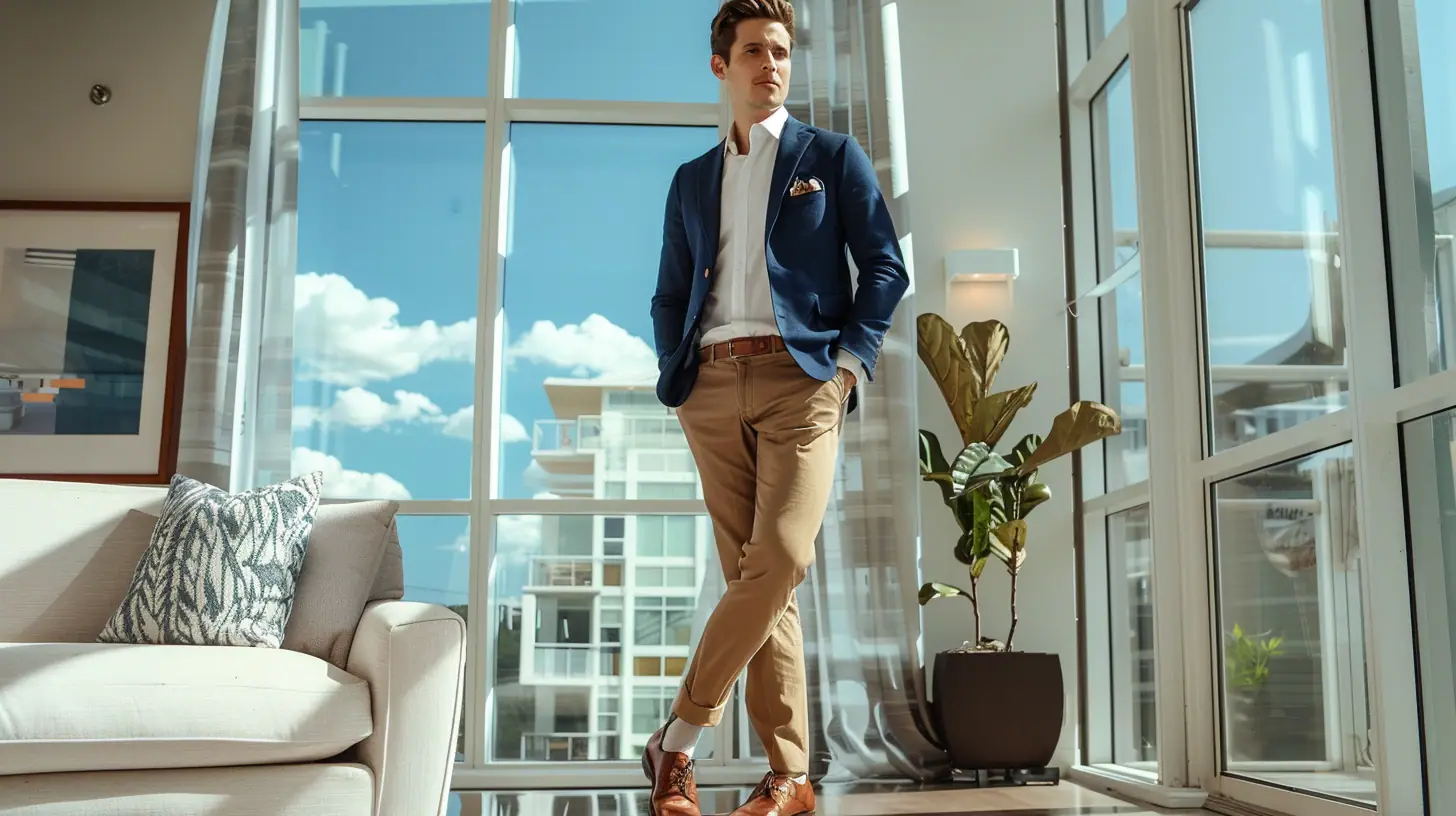
Start with understanding proper fit – it’s the foundation of great style. You’ll want to build a versatile wardrobe with essential pieces like a navy blazer, dark denim, and quality dress shoes. Master color coordination by starting with neutral tones, then gradually introduce bolder colors using the 60-30-10 rule. Focus on dressing appropriately for different occasions, from business casual to formal wear, and always consider your body type when selecting clothes. Keep grooming standards high and invest in key accessories like a classic watch and leather belt. There’s much more to discover about elevating your personal style.
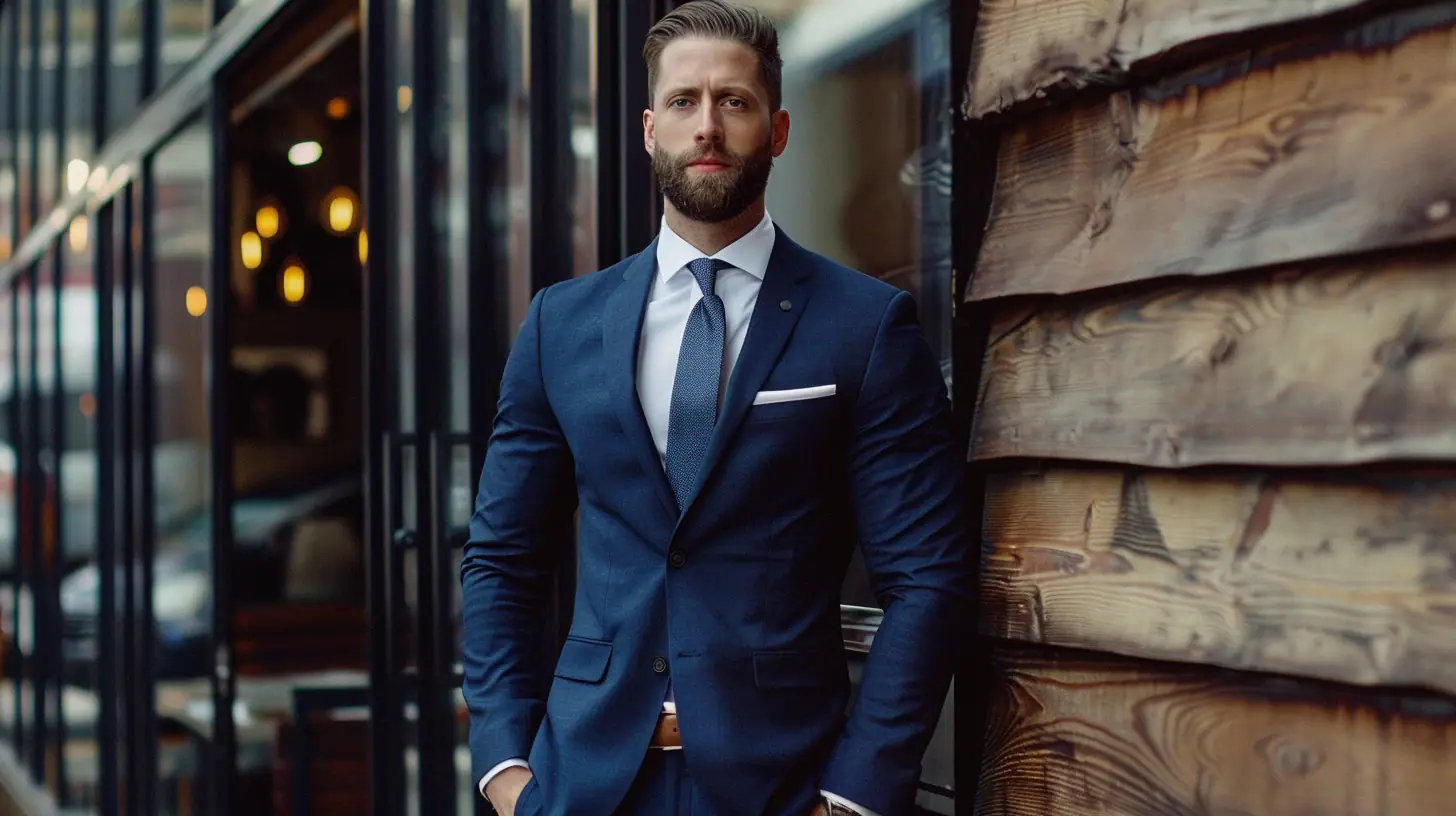
The foundation of men’s style rests on proper fit. Your clothes should complement your body shape while allowing natural body movement throughout the day. Understanding fit measurements is essential – they’ll determine how your garments drape and whether they’ll enhance or detract from your appearance.
Start with your shoulders, as they’re the anchor point for most garments. Proper shoulder alignment means the seam should end right where your shoulder meets your arm. For shirts and jackets, the sleeve should fall naturally with minimal bunching.
Pay attention to style proportions: your clothes shouldn’t be too tight or too loose, as either extreme can throw off your silhouette shapes.
When shopping, don’t rely solely on size labels. Different brands use varying measurements, and fabric stretch can affect how garments wear over time. Instead, use fitting guides to measure key points like chest, waist, inseam, and neck. If you’re unsure, consider consulting a personal stylist who can help you understand your ideal proportions.
Remember that tailored alterations are often necessary to achieve the perfect fit. Even expensive clothes might need adjustments to match your body perfectly.
Focus on your comfort level while maintaining a polished appearance. A well-fitted garment should allow you to sit, stand, and move without restriction while maintaining its shape. The right fit will make you look slimmer, taller, and more put-together, regardless of your body type or the clothing style you choose.
Building a versatile wardrobe starts with 12 foundational pieces that’ll serve as your style building blocks. These wardrobe essentials include a well-fitted navy blazer, dark denim jeans, white dress shirt, solid white t-shirt, khaki chinos, gray wool trousers, brown leather dress shoes, white sneakers, black oxford shoes, navy suit, leather belt, and a neutral overcoat.
These versatile staples work together to create multiple outfit foundations for any occasion. You’ll find these timeless classics complement each other perfectly, allowing you to mix and match with confidence. The key is selecting functional pieces in neutral colors that transcend seasonal trends.
Your essential layers should include at least one quality sweater in merino wool or cashmere, while everyday basics like polo shirts and henley tops add casual versatility. These style investments might cost more upfront but will outlast cheaper alternatives and maintain their appearance longer.
When shopping for these trend-proof items, focus on quality materials and classic cuts. For seasonal must-haves, add lightweight linen shirts for summer and a wool scarf for winter.
Remember that these 12 core pieces aren’t just clothes – they’re the foundation of your personal style. Each item should fit perfectly and reflect your lifestyle while maintaining versatility. By building your wardrobe around these essential pieces, you’ll always have appropriate options for any situation, from casual weekends to formal business meetings.
Mastering color coordination starts with understanding three core principles: complementary colors, color temperature, and value contrast. The color wheel serves as your guide, helping you identify which shades work together naturally and which create visual interest through deliberate contrast.
Start with neutral tones as your foundation – black, white, navy, gray, and beige provide versatility and timeless appeal. You’ll want to build your wardrobe around these colors before introducing bolder choices.
When you’re ready to expand, take into account your seasonal palettes. Winter and summer typically align with cool tones like blues and grays, while spring and fall embrace warm tones such as browns and oranges.
Color psychology plays a significant role in how others perceive you. Blues convey trust and professionalism, while reds project confidence and energy. You can use this knowledge to your advantage in different settings.
For sophisticated looks, try monochromatic schemes using varying shades of the same color. This approach creates depth while maintaining harmony.
Color blocking can make a bold statement when done correctly. Pair complementary colors (those opposite each other on the color wheel) for high-impact outfits, but use this technique sparingly.
For everyday wear, stick to the 60-30-10 rule: 60% dominant color, 30% secondary color, and 10% accent colors. This balance guarantees your outfit remains cohesive without becoming overwhelming.
Remember to take into account your skin tone when selecting colors. Some shades will enhance your natural coloring, while others might wash you out.
Test different combinations in natural lighting to find what works best for you.
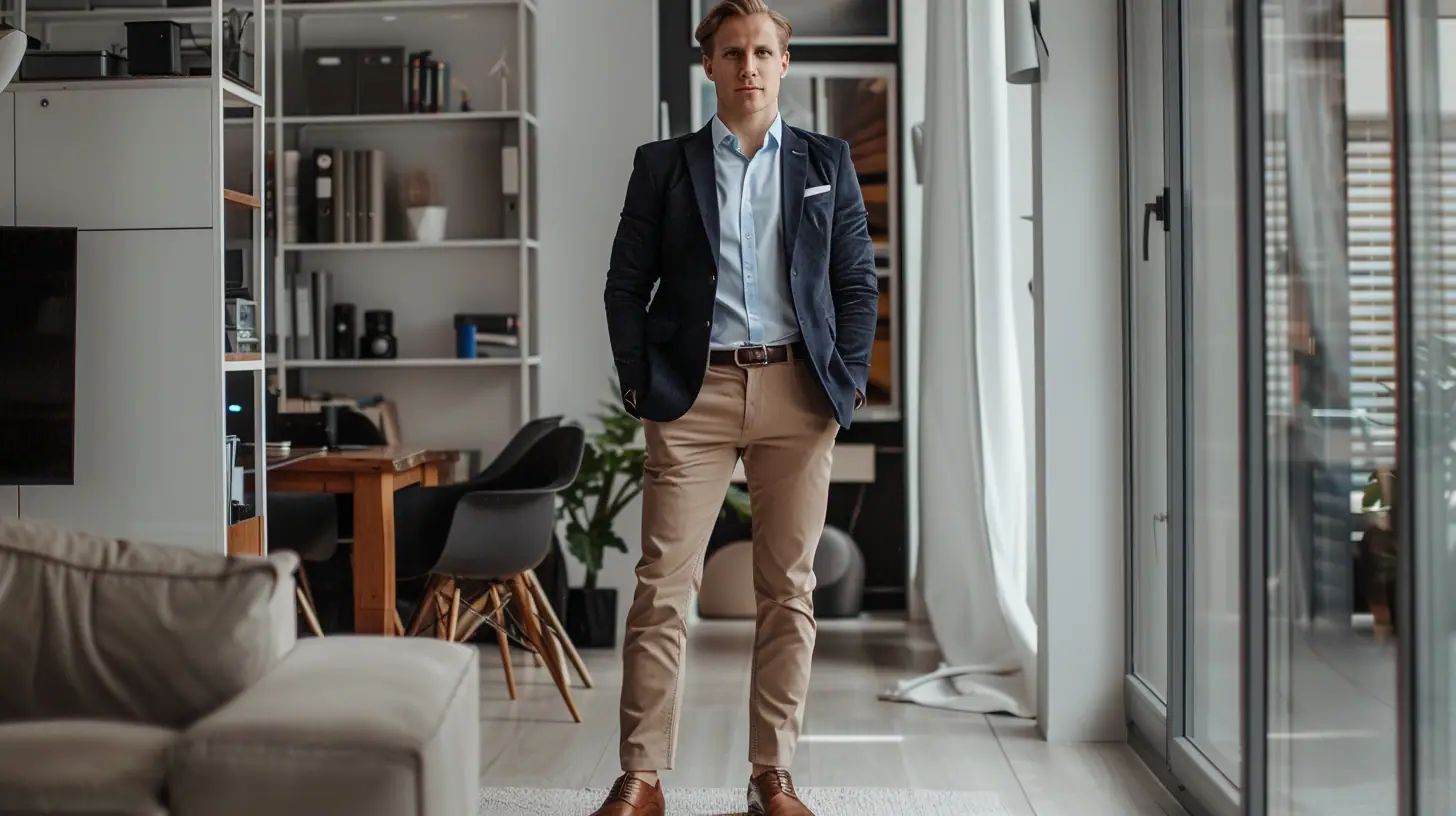
Business casual represents one of today’s most common yet frequently misinterpreted dress codes. The business casual history dates back to the 1960s when office style evolution began shifting away from formal suits, gaining momentum in the 1990s with the tech industry’s influence.
You’ll want to build your business casual wardrobe around these core elements:
| Top Pieces | Bottom Pieces | Footwear |
|---|---|---|
| Cotton shirts | Khaki chinos | Leather loafers |
| Polo shirts | Wool slacks | Derby shoes |
| Blazers | Dark jeans | Dress boots |
| Sweaters | Gray trousers | Brogues |
| Sport coats | Navy pants | Monk straps |
To master business casual, you’ll need to understand its flexibility while maintaining professionalism. Start with neutral colors for your core pieces, then add subtle patterns and textures to create interest. Your clothes should fit well – not too tight or loose – and always be wrinkle-free.
Remember these key principles: dress one notch below formal business attire but above weekend wear. Avoid anything you’d wear to the gym or beach. Keep your shirts tucked in unless they’re specifically designed to be worn untucked. Your shoes should always be clean and well-maintained.
The modern interpretation of business casual allows for more personal expression than its origins, but don’t push the boundaries too far. When in doubt, observe how successful colleagues dress and take cues from your company’s culture while maintaining your professional image.
Formal wear represents the pinnacle of men’s fashion, demanding careful attention to detail and strict adherence to traditional rules. When you’re attending black-tie events, understanding formal event attire and dress code nuances becomes crucial for making the right impression.
Your tuxedo etiquette starts with selecting the right suit materials – typically wool or wool-blend in black or midnight blue. The lapel types matter considerably; choose between peaked or shawl lapels, both acceptable for formal occasions.
You’ll need to pair your tuxedo with appropriate dress shirt styles, focusing on wing-collar or turndown-collar options in crisp white. Your tie choices should center on black bow ties for traditional events, though some modern interpretations allow for long black ties.
Don’t overlook the importance of formal footwear – patent leather oxford shoes are the gold standard. Your attention to detail should extend to accessories: pocket square usage requires precision, with white silk being the classic choice.
Consider your cufflink options carefully, as they’re visible elements that can add personality while maintaining formality.
Remember these key points:
Quality leather accessories and well-crafted shoes serve as the foundation of a polished wardrobe, making or breaking your entire look. You’ll want to invest in at least three essential pairs: black oxford dress shoes for formal occasions, brown leather brogues for business casual settings, and loafers for smart-casual wear.
Choose full-grain leather whenever possible, as it’s more durable and develops an attractive patina over time.
Your leather accessories should complement your shoes. Match your belt to your shoes in both color and finish, and guarantee your watch strap coordinates with these elements. For a sophisticated look, your wallet, briefcase, or messenger bag should maintain this cohesive leather story.
Proper shoe care is vital for maintaining your investment. You’ll need cedar shoe trees to absorb moisture and maintain shape, a horsehair brush for regular cleaning, and quality shoe polish in matching colors.
Develop a routine of cleaning, conditioning, and polishing your shoes every few weeks. Don’t wear the same pair two days in a row to allow proper drying time.
Leather maintenance extends to your accessories as well. Clean your leather goods with a soft cloth, condition them regularly with leather-specific products, and store them properly to prevent damage.
Keep leather items away from direct sunlight and extreme temperatures. When traveling, use dust bags to protect your shoes and leather goods.
With proper care, quality leather items can last for years, becoming more distinguished with age.
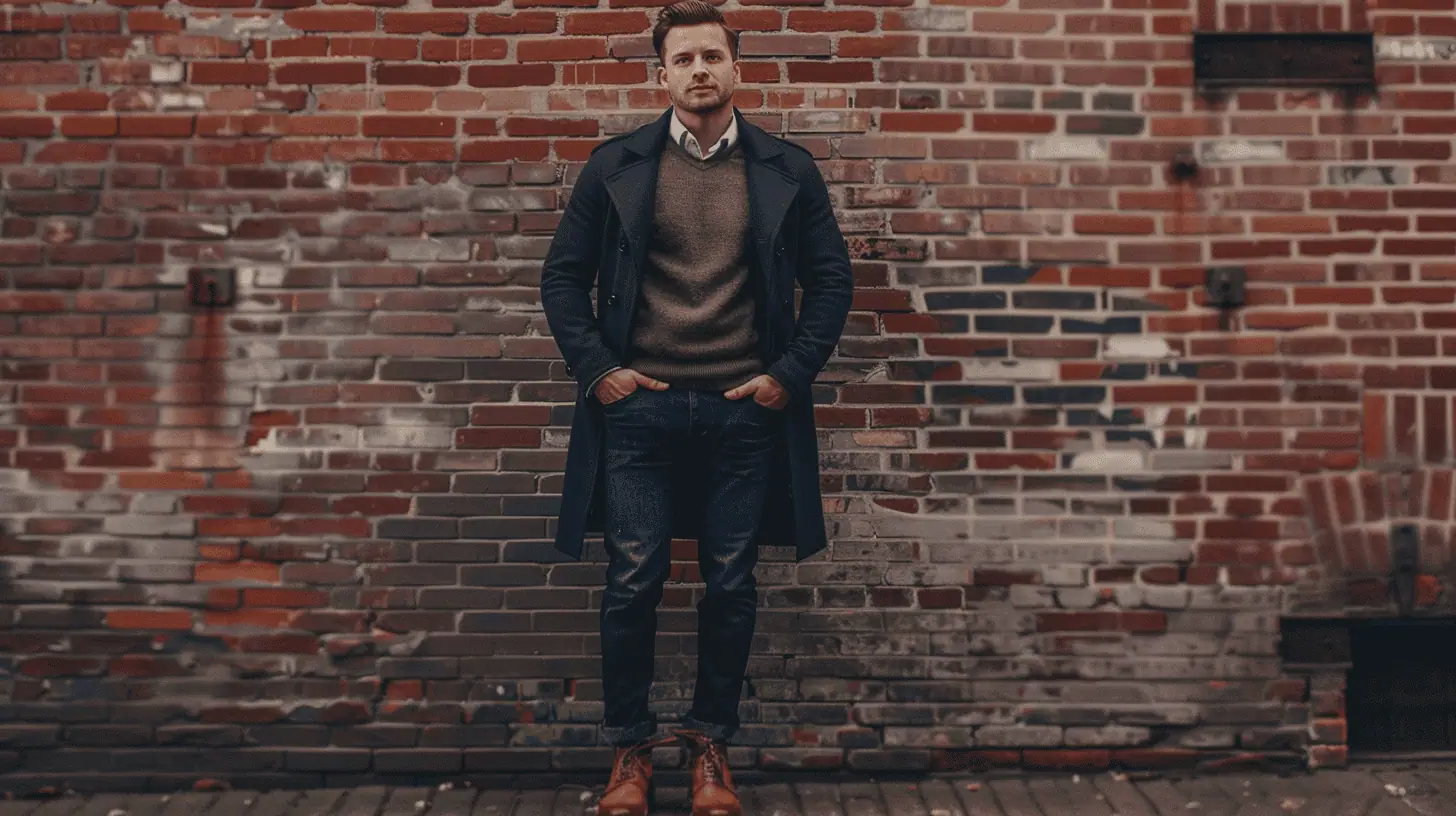
Along with mastering the basics, effective layering transforms ordinary outfits into sophisticated ensembles while providing practical temperature control. Understanding layering fabrics and how they work together is essential for building versatile, seasonal layers that adapt to changing temperatures and settings throughout your day.
Start with thin, breathable base layers that sit close to your body, like fitted t-shirts or lightweight merino wool sweaters. As you add pieces, pay attention to layering proportions – each visible layer should complement the others in length and fit. Create visual interest through texture contrast by combining different materials, such as a smooth cotton shirt under a textured wool sweater, topped with a structured blazer.
When selecting outerwear choices, consider your climate considerations and daily activities. In cooler weather, opt for adaptive outfits that you can easily modify by adding or removing layers. A classic combination includes a dress shirt, light sweater, and sports coat or jacket.
Don’t overlook accessory layering – scarves, vests, and cardigans can add both warmth and style.
Avoid common layering mistakes like wearing bulky pieces together, which can create an unflattering silhouette. Instead, gradually increase the thickness of each layer from thin to thick as you move outward.
Keep your layers balanced – if you’re wearing a chunky knit sweater, pair it with slimmer-fitting pants to maintain proportion. Remember that successful layering isn’t just about piling on clothes; it’s about creating a cohesive look that’s both functional and stylish.
Building on smart layering practices, adapting your wardrobe to each season guarantees you’ll look polished year-round. Weather adaptability starts with understanding summer fabrics like linen and lightweight cotton, which keep you cool while maintaining a sharp appearance.
For winter layering, invest in wool sweaters, thermal undergarments, and insulated outerwear that combine warmth with style.
Transitional garments are essential for spring and fall when temperatures fluctuate. Consider these versatile items:
Seasonal colors play a vital role in your wardrobe planning. Embrace lighter tones and pastels during spring and summer, while opting for deeper, richer hues during fall and winter.
When selecting outdoor essentials, choose items that serve multiple purposes, like a water-resistant jacket that works for both casual outings and formal occasions.
Don’t forget to incorporate festive attire and holiday outfits into your seasonal planning. Keep a few occasion-appropriate pieces ready for unexpected events.
For vacation styles, pack versatile items that can be dressed up or down, ensuring you’re prepared for any situation while maintaining your personal style.
Understanding fabric properties forms the foundation of a well-curated wardrobe, as different materials serve distinct purposes and create varying levels of comfort and style. When selecting fabrics, you’ll need to take into account various fabric types, from natural fibers like cotton, wool, and silk to synthetic options like polyester and nylon.
The texture importance of each material affects both comfort and appearance. You’ll find that smoother fabrics like merino wool work well for formal wear, while textured materials like tweed add visual interest to casual outfits.
Weight variations play a vital role in your comfort – lighter fabrics offer better breathability factors, while heavier materials provide warmth and structure.
Think about seasonal fabrics when building your wardrobe. Opt for breathable cotton and linen in summer, and choose wool blends for winter. Fabric care requirements should influence your choices too – some materials need dry cleaning, while others are machine washable.
When exploring fabric blends, you’ll discover combinations that offer the best of multiple materials, like cotton-polyester for wrinkle resistance.
Pattern choices and color impact vary greatly based on the fabric’s construction. Darker colors typically show less wear, while patterns can help mask minor imperfections.
If sustainability matters to you, look for sustainable materials like organic cotton, recycled polyester, or hemp. These eco-friendly options don’t compromise on style or durability.
Remember that quality fabrics, though sometimes costlier upfront, often provide better value through longer wear and superior appearance.
The concept of a capsule wardrobe revolves around crafting a minimalist collection of versatile, timeless pieces that work together seamlessly. When building your capsule wardrobe, focus on wardrobe sustainability by selecting high-quality items that’ll last for years. Start with timeless classics like a navy blazer, well-fitted white dress shirts, and dark denim that offer seasonal versatility.
Consider these essential elements when creating your minimalist fashion collection:
Your capsule wardrobe should include a balanced mix of formal and casual pieces that can be interchanged effortlessly. Think about your lifestyle and confirm each item serves multiple purposes. For example, a quality white Oxford shirt can work for both business meetings and casual weekend outings when paired differently.
Remember that building a capsule wardrobe is an ongoing process. Start by evaluating your current closet, removing items that don’t serve your needs, and gradually adding pieces that align with your style goals.
This approach not only simplifies your daily outfit choices but also promotes sustainable fashion practices.
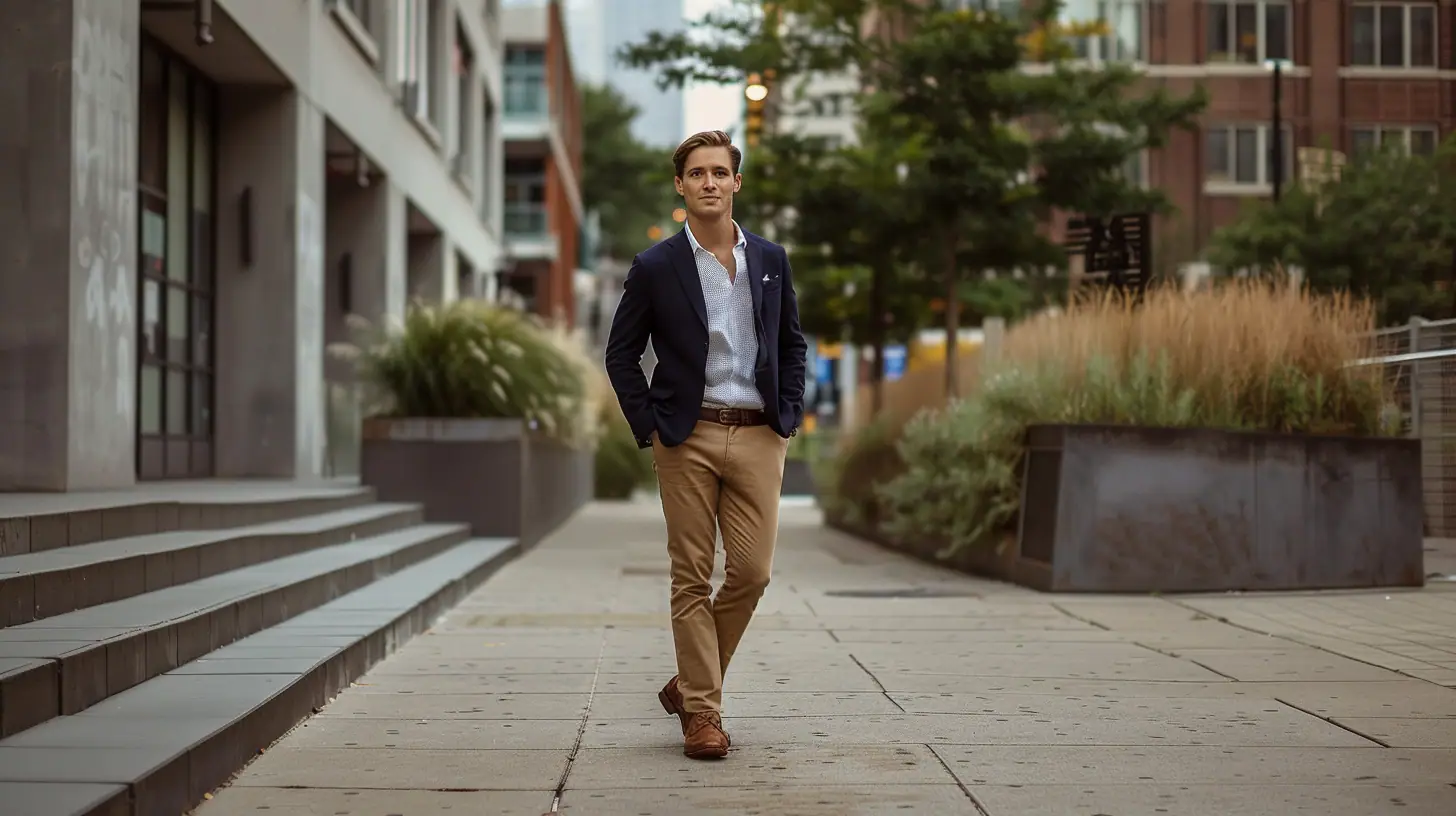
Smart casual strikes the perfect balance between polished and relaxed, making it one of the most adaptable dress codes you’ll encounter. The key to mastering smart casual lies in understanding style versatility and knowing how to combine refined pieces with more laid-back elements.
Start with well-fitted basics: a quality blazer in navy or charcoal, crisp button-down shirts, and tailored chinos. You’ll want to focus on fabric choices that bridge the formal-casual gap – think cotton, merino wool, and premium denim.
Outfit combinations should mix dressy and relaxed pieces: try pairing dark jeans with a casual blazer, or dress shoes with chinos and a knit polo.
Event appropriateness plays a vital role in smart casual dressing. For business settings, lean toward the smarter end with pressed trousers and leather dress shoes. For social gatherings, you can opt for premium sneakers and a lightweight sweater over a collared shirt.
Fit importance can’t be overstated – even casual pieces should be tailored to your body shape.
Make seasonal adjustments to stay comfortable and appropriate. In summer, choose lightweight fabrics and lighter colors, while winter calls for layering with textured materials like tweed or corduroy.
Smart casual occasions can range from office meetings to dinner dates, so keep your wardrobe flexible. Remember to maintain a polished appearance by ensuring your clothes are clean, pressed, and in good condition, regardless of how casual the individual pieces may be.
Personal grooming serves as the foundation for any well-executed style, transforming even the finest clothing into a complete, polished look. Your style evolution depends heavily on establishing consistent grooming routines that complement your wardrobe choices.
Understanding the connection between grooming and style isn’t just about looking good – it’s about creating a harmonious presentation that reflects your attention to detail.
The lifestyle impact of proper grooming extends beyond your appearance, affecting your confidence and how others perceive you. Start with skincare basics: cleansing, moisturizing, and protecting your skin from sun damage. Hair care and facial grooming should align with your overall style aesthetic, whether you’re maintaining a clean-shaven look or practicing regular beard maintenance.
Key areas that deserve your attention:
Remember that your grooming routine should evolve with your style choices. If you’re wearing formal attire, guarantee your grooming matches that level of sophistication.
For casual looks, maintain the same attention to detail but with a more relaxed approach. The goal is to create a seamless connection between your grooming practices and your clothing choices, resulting in a cohesive and polished appearance.
Building upon proper grooming habits, understanding your body type forms the cornerstone of selecting clothes that enhance your natural physique. Your body’s proportions directly influence how garments drape and fit, making it essential to dress according to your specific shape.
If you’ve got an athletic build or inverted triangle shape with broad shoulders, you’ll want to balance your upper body by choosing straight-leg pants and avoiding overly slim cuts that might make you appear top-heavy.
For those with slim figures, layering can add visual bulk while vertical stripes create the illusion of a more muscular physique. You’ll benefit from structured jackets and horizontal patterns that add width to your frame.
Those with tall proportions should focus on breaking up their height with contrasting colors and avoiding head-to-toe monochromatic looks. If you’re dealing with short stature, opt for vertical lines and avoid bulky clothes that can overwhelm your frame. Wear properly fitted clothes that elongate your silhouette.
For men with a pear shape, draw attention upward with detailed collars and structured shoulders while keeping the lower body simple.
Those with a rectangular frame should create definition through tailored cuts and strategic layering. If you’ve got an average build, you’ve got the most flexibility – focus on proper fit rather than compensating for proportions.
Remember that regardless of your body type, well-fitted clothes will always look better than trending styles that don’t suit your physique.
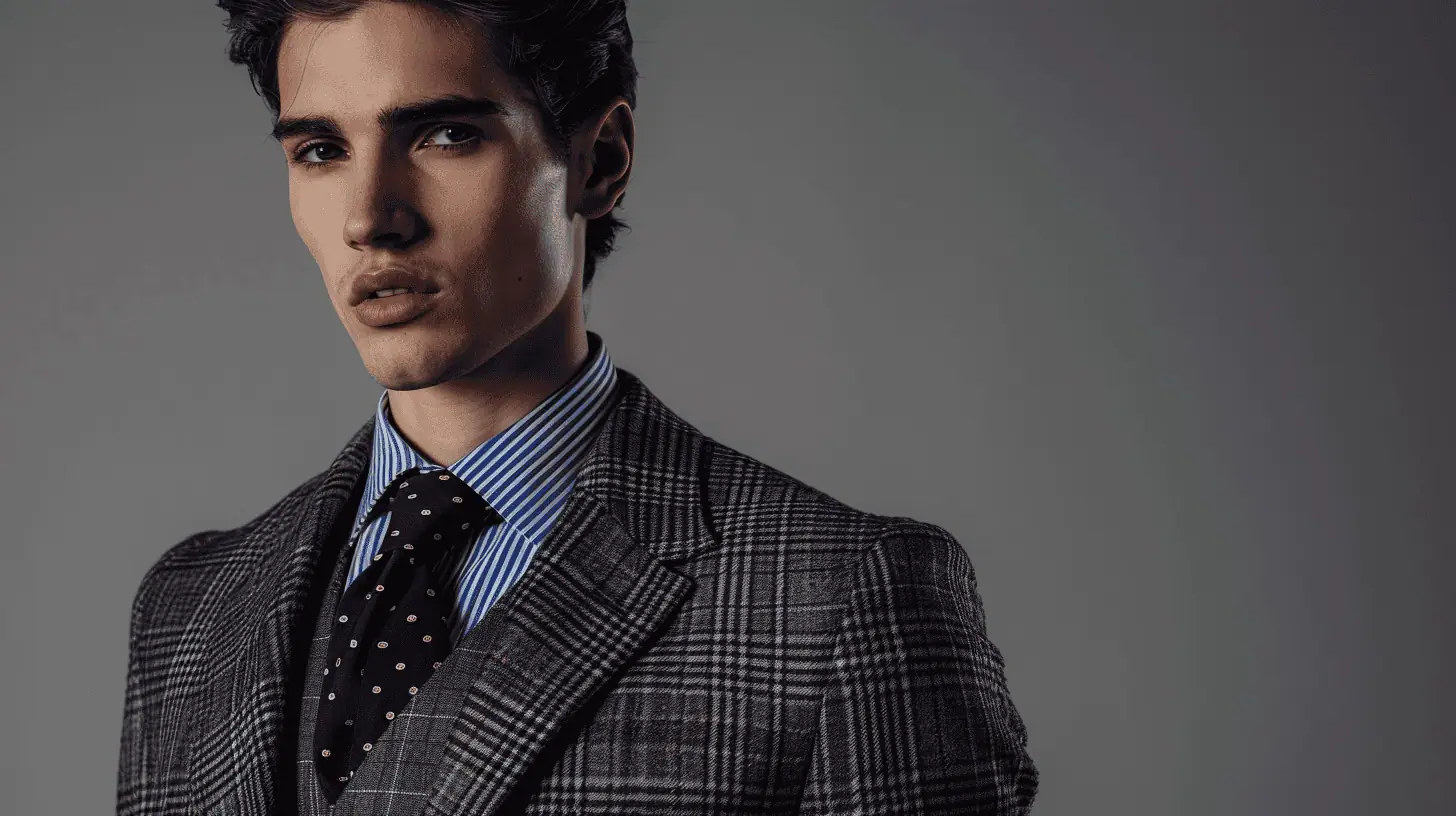
Mastering pattern mixing can elevate your style from basic to sophisticated, but it requires understanding fundamental rules to avoid clashing combinations. When you’re combining different prints, consider the scale and proportion to achieve print balance. Start by pairing a dominant pattern with a subtler one to create visual harmony without overwhelming your look.
When experimenting with patterns, you’ll want to stick to a consistent color scheme to prevent color clash. For instance, if you’re wearing a navy striped suit, complement it with a small-scale geometric pattern tie in similar blue tones.
Seasonal patterns should align with the time of year – lighter, brighter patterns for spring and summer, deeper, richer patterns for fall and winter.
Don’t shy away from mixing three patterns if you’re confident, but guarantee one remains dominant while the others play supporting roles. For example, wear a bold plaid blazer with a thin-striped shirt and a small polka dot pocket square.
The key is maintaining proper scale relationships between patterns and ensuring they share at least one color to create a cohesive look.
While pattern mixing focuses on your clothing combinations, the right accessories can transform a basic outfit into a standout ensemble. Understanding which accessories deserve your attention and investment will help you build a versatile wardrobe that works for any occasion.
Start with watch trends, as a timepiece remains the cornerstone of men’s accessories. Choose between classic analog designs for formal settings and smart watches for casual wear.
When it comes to tie styles, stock your collection with both solid colors and subtle patterns in varying widths. Hat choices should reflect your personal style – consider flat caps for casual outings and fedoras for dressier occasions.
Belt alternatives now extend beyond traditional leather – woven fabrics and modern materials offer fresh options for both formal and casual looks. For jewelry basics, stick to understated pieces: a wedding band, a simple bracelet, or a meaningful necklace.
Cufflink options range from traditional metal designs to contemporary materials like wood or carbon fiber.
Consider bag functionality when selecting between briefcases, messenger bags, or backpacks – your choice should match your daily needs and professional image.
Scarf styles can add flair to winter outfits; opt for cashmere or wool in complementary colors. Eyewear tips: maintain both sunglasses and prescription frames that suit your face shape.
For effective shoe care and noise reduction, you’ll want to check a few key areas.
First, sprinkle baby powder or cornstarch under the insole to absorb moisture that causes squeaking.
If it’s the soles making noise, roughen them slightly with sandpaper.
You can also apply leather conditioner where the tongue meets the upper part of the shoe.
Don’t forget to check for loose insoles, which you can reattach with shoe glue.
You’re enjoying a business lunch when suddenly that drop of olive oil lands right on your favorite silk tie.
Don’t panic! For effective tie maintenance, immediately cover the spot with talcum powder or cornstarch to absorb the oil.
Let it sit for several hours, then gently brush off. If the stain persists, take it to a professional dry cleaner who specializes in silk care.
Never use water or rub the stain, as this can damage the delicate fabric.
No, you shouldn’t wear your watch over your shirt cuff.
When wearing long sleeves, your watch should sit under your cuff, with just a glimpse showing when your arm is at rest.
Different watch styles require varying cuff lengths to accommodate them properly.
You’ll want your shirt cuff to slide smoothly over your watch when you extend your arm, while revealing about 25% of the watch face when your arm’s relaxed.
You’ve invested in a quality suit, and proper fabric care is essential.
For ideal suit maintenance, you shouldn’t dry clean too frequently – it can actually damage the fibers. Only dry clean when your suit is visibly soiled or develops odors, typically 2-3 times per year with regular wear.
Between cleanings, use a clothes brush, hang your suit properly, and let it rest between wears.
Steam pressing can refresh your suit without harsh chemicals.
You don’t need to match your glasses frame color to your wedding ring, but it’s a thoughtful detail to contemplate in your overall frame color coordination.
Instead, focus on choosing frames that complement your face shape, skin tone, and personal style.
If you’re planning for wedding style tips, select frames that’ll look timeless in photos and coordinate with your overall wedding attire rather than specifically matching your ring.
Mastering men’s style is like learning to ride a bike – once you’ve got it, you’ll never forget. You’re now equipped with the fundamentals of fit, color, and pattern mixing that’ll transform your wardrobe from basic to brilliant. Remember, it’s not about following every trend, but building a timeless closet that works for your body type and lifestyle. Keep these guidelines close, and you’ll always dress to impress.



